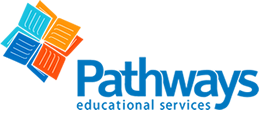
Exploring Equity and Social Justice in HSE4M: A Path Towards a Fair Society
Share
Introduction: Understanding the Concept of Equity and Social Justice
In today’s increasingly diverse and interconnected world, the pursuit of equity and social justice has become an imperative. Equity refers to ensuring that everyone has access to the same opportunities, resources, and privileges, regardless of their background or circumstances. Social justice, on the other hand, entails addressing and rectifying societal injustices, inequalities, and systemic barriers. To foster a fair and just society, it is crucial to discuss and explore these concepts in educational settings. This blog post will break down HSE4M – Equity & Social Justice course for grade 12.
Course Overview of HSE4M
Through the course of HSE4M, students have the opportunity to deepen their comprehension of the theoretical, social, and historical foundations of diverse equity and social justice issues. Moreover, they will critically analyze different strategies aimed at promoting positive societal transformation. The course will delve into both past and present equity and social justice concerns in Canada and on a global scale. Students will have the chance to investigate power dynamics and understand how various factors exert an influence on equity and social justice. Additionally, they will enhance their research abilities and actively contribute to the design and implementation of a social action initiative pertaining to an equity or social justice matter.
Course Outline of HSE4M
HSE4M is divided into various units exploring different equity and social justice aspects. These units cover a wide range of topics, including race, ethnicity, gender, sexual orientation, disability, socio-economic status, and more. Students will examine the historical context, current challenges, and various theoretical perspectives related to equity and social justice.
Unit 1: Understanding Social Construction
Unit 2: Addressing Equity and Social Justice Issues
Unit 3: Personal and Social Action
Key Learning Points in HSE4M
Throughout HSE4M, students will encounter important concepts and learning points that contribute to their understanding of equity and social justice. Some of the key themes include:
- Power and Privilege: Analyzing how power dynamics and privileges shape society and perpetuate inequality.
- Intersectionality: Understanding how various aspects of an individual’s identity intersect and influence their experiences within society.
- Advocacy and Activism: Exploring different methods and strategies for advocating and effecting positive change in society.
- Systemic Injustice: Examining how social, economic, and political systems contribute to inequality and marginalization.
By delving into these themes, students develop a deeper awareness of the complexities surrounding equity and social justice, enabling them to become informed and engaged citizens.
Assessments in HSE4M
Assessments in HSE4M focus on evaluating students’ understanding and application of the concepts learned throughout the course. These assessments may include research papers, presentations, and group projects. Students will also be encouraged to reflect on their personal experiences and biases to foster a more inclusive and empathetic perspective on equity and social justice. Team work evaluations consist of 70% and the final culminating task will weight 30% of the overall grade.
| Evaluation | Description |
| Unit 1: Inquiry Model Short Survey Assign | Students are responsible for creating a short survey and assessing the outcomes from the results |
| Unit 1: Social Construction Unlearn Poster Presentation | Students are responsible for making a poster presentation. The poster will address social constructive messages used by media |
| Unit 1: Towards a New Vision Personal Reflection | Students will reflect and understand the breakdown of invisible privilege based on gender, race, sexual, orientation and class |
| Unit 2: Truth and Reconcilitation Online Conference | Students will have an online presentation that discusses the importance and the significance behind the 94 calls to action |
| Unit 2: Addressing Issues in Equity and Social Justice Rant Video | Students will imagine themselves as an active member of the media industry. They will be creating an online rant that specifically targets an issue |
| Unit 3: Personal Social Justice Action Project | Students will implement their knowledge be using strategies to design and implement an action project that addresses a major social issue |
| Summative Project | The summative project brings together the main topics and concepts of the course into one final assignment where students are to create their own personalized online course porfolio |
Conclusion: Empowering a Fair and Just Society through HSE4M Education
HSE4M plays a vital role in equipping students with the knowledge, skills, and mindset needed to navigate and address the challenges of an increasingly diverse world. By promoting critical thinking, empathy, and an understanding of social inequalities, the course empowers students to advocate for change and contribute to building a fair and just society.
Through an exploration of equity and social justice issues, HSE4M fosters an awareness of our collective responsibility to challenge and dismantle systems that perpetuate inequality. This education is crucial in creating a more inclusive, empathetic, and equitable future for all individuals, regardless of their unique backgrounds and circumstances.
Earn Ontario High School Credits Online
Frequently Asked Questions about HSE4M
What post-secondary programs is a HSE4M credit good for?
HSE4M fulfills the general requirement for post-secondary (six 4U/4M credits) as a 4M level course, eligible for both college, university, and apprenticeships. For specific post-secondary programs, HSE4M is a perfect choice for aspiring social work, social sciences, psychology, political science, education, and law majors.
What is an equity and social justice class about?
Equity and Social Justice is a field of study focused on recognizing and challenging the societal systems, structures, and beliefs that fuel inequality, discrimination, and oppression. This is analyzed through a number of lenses, including race, gender, age, status, religion, wealth, sexuality and much more. In doing so, Equity and Social Justice seeks to prioritize fairness, inclusivity, and human rights.
What are the five core principles of social justice?
The five core principles for social justice are:
- Access (ensuring everyone has equal opportunity and access to important resources, such as healthcare)
- Diversity (accepting the differences in people, from race and gender to sexual orientation and religion)
- Equity (ensuring fair treatment for all by acknowledging the inequality in our societal systems and structure)
- Participation (every individual has the right to participate in and contribute to politics, the economy, their community, and socially relevant discussions)
- Human Rights (every individuals human rights and freedoms are protected)




